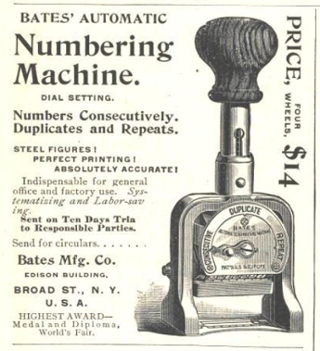Bates Stamping the Future
dev

Recently I read an insightful article by Mr. Adam Brill a Vice President at Logikcull in Cybersecurity Law & Strategy titled Blockchain-Will-bring-Opportunities-Challenges-to-Legal-Discovery.
I recommend it as a useful primer not just on Blockchain and Discovery but also on surrounding issues.
and assuring the authenticity of certain commodities…[and]… is helping to build tools and infrastructure for the legal field, helping lawyers do such things as draft contracts, record transactions and verify legal documents.”
Mr. Brill notes as well that “[i]f electronically stored records were blockchain records, they would be self-authenticating and stored publicly (if part of a public or hybrid blockchain). That adds to their integrity. If managed in the blockchain environment, chain of custody is more readily known and easier to demonstrate.”
Mr. Brill is spot on. In fact, this was the genesis for CertifiedTrue.co creating a super DApp and SaaS application called CertifiedPhoto™ providing a secure process for capturing, storing and authenticating digital photos and CERTifying when and where the photo was taken and who took it. The target market for Certified Photo is the Legal and Insurance and Real Estate communities, though other use cases have been identified.
In any case, in the course of this past year while devising the architectural framework for our DApp/Saas, our team recognized the limitations in terms of speed, cost and scalability of broader established blockchain platforms. CertifiedTrue’s team of technical experts therefore pivoted and started to develop our own Blockchain network and protocols to support our DApp/SaaS application. Before long we realized that our Blockchain was uniquely suited to meet the growing needs of the Legal, Insurance and Real Estate business sectors that we had been engaging with to validate and fine tune our DApp/Saas.
We thought about alternative use cases for our DApp … authenticating photographs for litigation, for insurance adjudication, for property management, before and after unit rental, fire damage, slip and fall, MVA, shipping logistics, collateralized mortgage obligation records and on and on…
When we thought about reorienting it toward e-discovery, which can entail greater volume, the latency and speed issues actually presented kind of a tipping point for recognizing we had to develop our own blockchain.
I am old enough to remember manual privilege logs and physical Bates stamping and going through boxes upon boxes of claim and litigation files before Relativity and the like…. Commutations, Reinsurance Litigation, Mass Torts. If you have shifted through thousands upon thousands of physical files for trial prep and then seen the advantages presented by software like Relativity you know firsthand what technology can bring to the table.
Suffice it to say that the later realization was something of an epiphany for team CertifiedTrue – namely, that our Certnet.io platform would be well suited to other LegalTech, InsuranceTech and Proptech Applications if we could make it more accessible with a more user friendly interface. If you understand the need, you can start laying out a solution.
That is why I was especially interested in Brill’s thoughts regarding the challenges presented by blockchain in the context of discovery. When every transaction becomes public and immutable but the identity of the user remains private, some aspects of traditional discovery become much more difficult.
In laying out the potential advantages presented by blockchain in discovery, Mr. Brill quotes attorney Erica G. Wilson, counsel at Vuono & Gray, LLC as follows:
“From an integrity and reliability point of view, blockchain creates a more absolute truth… [noting that]… Chain of custody would be more solid because the blockchain would reveal whether a document has been manipulated, whether it is what it purports to be, and whether all data that is supposed to come with the document is actually there. These chain of custody capabilities makes blockchain work for things like title insurance. “It can prove who owns a real estate asset. That’s the best use case I see.”
Erica G. Wilson
Both Mr. Brill’s observations and counselor Wilson’s accord with our own research on CertifiedPhoto’s use cases and, by extension, the need for a Blockchain platform that can support applications designed to meet these needs, including E-Discovery. Similarly, the most forward thinking Legal practitioners, Insurance executives and Real Estate professionals are beginning to recognize that over the next decade distributed ledger technology (blockchain) will not be just some exotic crypto-currency tech but rather a pervasive and largely invisible technological infrastructure that supports many of the core business functions in their industries. For those who are new to the space, Blockchain Brings Opportunities, Challenges to Legal Discovery is an excellent introduction.
It stands to reason that, eventually, blockchain backed LegalTech solutions will be litigation and e-discovery tools as indispensable as a privilege log or a Bates stamp.
VJ Tabone



